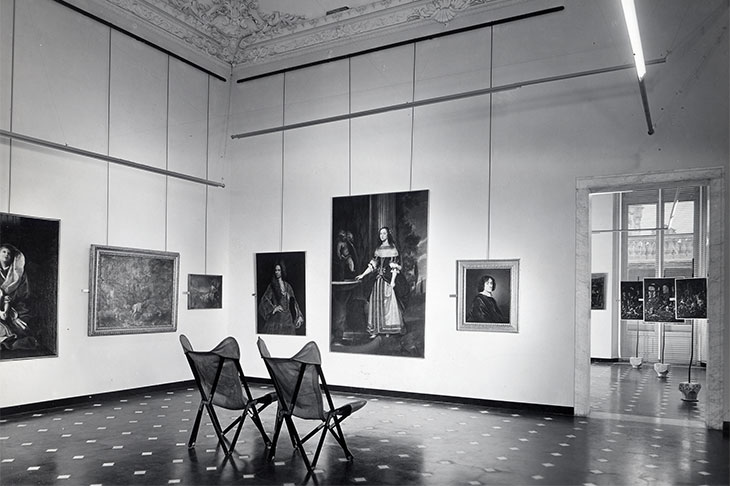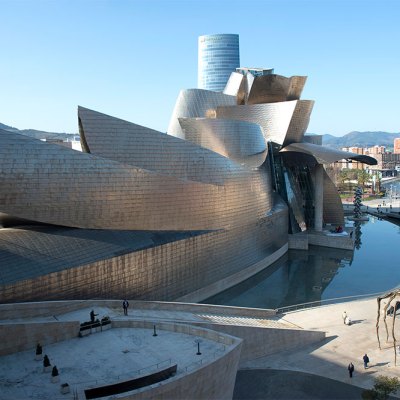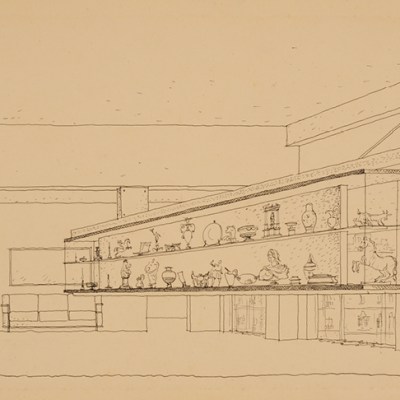This review of ‘Art on Display 1949–1969’ at Het Nieuwe Instituut, Rotterdam, appears in the March 2021 issue of Apollo. The exhibition, currently closed due to Covid-19 restrictions, is scheduled to run until 6 June.
In the aftermath of the Second World War, a split emerged between European architects about how the reconstruction of cities might best be realised: several northern European architects, among them the Dutchman Aldo van Eyck, advocated for building that took into account human patterns of association within new and specifically designed forms; the other attitude, represented by an Italian, Ernesto Rogers, called for understanding of the significance of the historical centre, and for architecture alert to its meaning. One branch wished to make a new future; the other wished to create a continuous present. It’s a divide that’s evident in ‘Art on Display 1949–1969’, an exhibition curated by Penelope Curtis and Dirk van den Heuvel that restages the paradigmatic work of those architects who influenced museum design in the period: in Italy, Franco Albini and Franca Helg, and Carlo Scarpa; in Brazil, via Italy, Lina Bo Bardi; and, in the Netherlands and England, Aldo van Eyck and Alison and Peter Smithson.
Installation view at Het Nieuwe Instituut, Rotterdam, showing the restaging of Lina Bo Bardi’s display of the collection at the Museu de Arte de São Paulo. Photo: Johannes Schwartz

The tendencies shown in the exhibition reflect contemporary debates about the city. In Italy, treatments of the display of art paralleled attitudes towards the repair of the historical city. Acts of making were contingent upon the resources, methods and crafts at hand, and the atmosphere (ambiente) of the whole; and the work of art in the museum was taken to be a significant and fragile utterance of the past, sited within a historical continuum that connected it with a febrile present. Caterina Marcenaro, director of museums in Genoa from 1949 to 1971, commissioned Franco Albini to renovate, and design permanent installations for the collections in, the Palazzo Bianco (1949–51) and the nearby Palazzo Rosso (1952–62); she wished few works to be shown, fostering a particular order of attention, and for their settings to be not domestic but consistent with the museum.
Albini, with Franca Helg, designed spaces that had a clear architectural character within the existing elaborate interiors, placing paintings, sculptures and decorative art in precise arrangements, supported by specially designed armatures – easels, brackets, vitrines – that brought works and viewers into active relationships with them. Typically, a painting would be presented without a frame, mounted on a steel post set into a base of concrete, with the viewer invited either to stand with it, to sit and contemplate it, or – for those paintings mounted on an armature with a handle – to take it in hand and engage physically with it. The simplicity of these supports reflected the technology available in post-war Italy, suggesting the plausibility of recovery and the preservation of dignity. Albini and Helg’s work in Genoa was echoed and refined in the designs of Carlo Scarpa for museums in Palermo, Venice and Verona. Within adjusted spaces, whose walls would often be supplemented by fine screens of stone or plaster, a work of art – inevitably ancient – would be set upon a graceful easel of hardwood and bronze, held in the air and towards both the light and the viewer as a kind of offering.
Installation view showing Franco Albini and Franca Helg’s design for the Palazzo Bianco, Genoa (1949–51). Photo: A. Villani & Figli/Fondazione Franco Albini

In contrast, the work of Van Eyck and the Smithsons was oriented towards human association and encounter, with the condition of the city – the street, its interactions, its vital materiality – as a guiding motif. Van Eyck designed two International Exhibitions of Experimental Art, largely given over to the Cobra group, at the Stedelijk Museum in Amsterdam (1949) and the Palais des Beaux-Arts in Liège (1951). Both arranged works, often small, in delicate relations with each other, establishing them as objects in space, poor and accessible, loosely hung on the walls or laid on the ground: on humble wooden platforms in Amsterdam and, in the huge spaces at Liège, on rectangular beds of coal. Set in a park in Arnhem, Van Eyck’s Sonsbeek sculpture pavilion of 1966 was a shelter with parallel walls of concrete blocks, forming ‘streets’ in which people and art might find themselves in intimate proximity. At the Tate Gallery in 1964, meanwhile, the Smithsons’ installation for ‘Painting & Sculpture of a Decade 54–64’ featured a continuous, kinked construction of partition walls that snaked through the galleries, forcing people into close contact with each other and with large-scale paintings and sculptures.
‘Art on Display’ recreates fragments of these projects by Albini and Helg, Van Eyck and the Smithsons, as well as Scarpa’s Museo Correr in Venice (1957–60) and Bo Bardi’s Museu de Arte de São Paulo (MASP; 1957–68). The exhibition was first held at the Gulbenkian Museum, Lisbon – whose interiors were designed by an international consortium to which Albini was central – before it transferred to Het Nieuwe Instituut in Rotterdam. In Lisbon, the design by Rita Albergaria came close to reviving the original character of the displays – particularly those of Albini, Scarpa and Bo Bardi, which benefitted from the scale of the Gulbenkian’s spaces and their relation to garden courtyards, producing atmospheres of quiet intimacy and engagement with works of art. Those of Van Eyck and the Smithsons, more urban in character, seemed discomfited by these conditions: the Smithsons’ Tate meander, for example, squeezed beneath low ceilings, inadvertently suggested art fairs of the 1990s.
Installation view at Het Nieuwe Instituut, Rotterdam, showing the restaging of Alison and Peter Smithson’s design for ‘Painting & Sculpture of a Decade 54–64’. Photo: Johannes Schwartz

At Het Nieuwe Instituut, where the space is vast, the exhibition feels entirely different. Although Jo Taillieu’s design creates specific spaces and backgrounds for each of the installations, the fragments of Albini and Scarpa are diminished, their specificity and necessary relation to architectural space dissipated in the cavernous interior (as glimpsed in the background of the preceding image). But here, in contrast, the Smithsons’ work again resembles another kind of body within the shell of a great interior, much like it would have seemed to its original viewers in London.
At both venues one restaging, that of Lina Bo Bardi’s installation of paintings for MASP, transcended the difficulties of recreating displays from (and for) elsewhere. Bo Bardi’s assembly of paintings, on glass ‘easels’ set in concrete footings, rejected all orthodoxies: the paintings – mostly portraits – all face the viewer as they enter the room, resembling a crowd through which the museum-goers move, visible to each other. As viewers and objects share the same space and time, the museum becomes not a mausoleum but a place of life – a public space, within which attention is not reverent but political. It is to the credit of ‘Art on Display’, in both its iterations, that it reminds us how the specific conditions for looking at art can – and in the post-war period, often did – foster engagement and grant the viewer agency.
From the March 2021 issue of Apollo. Preview and subscribe here.



